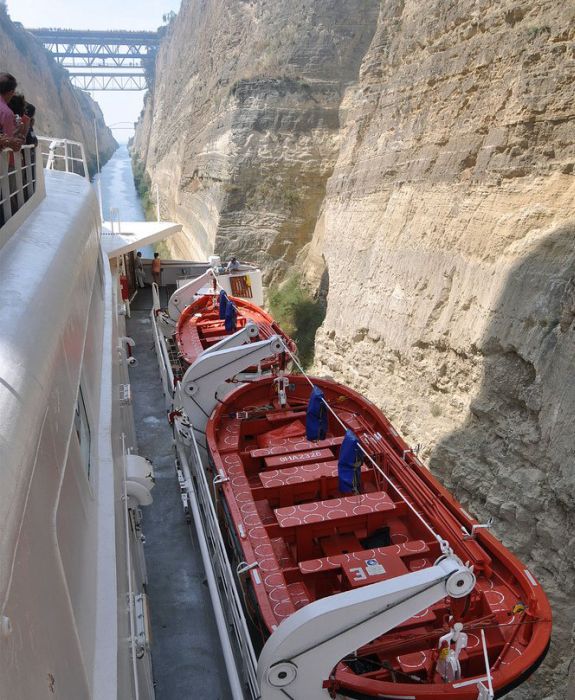|
|
The Corinth Canal, Aegean Sea, Greece
|
Several rulers in antiquity dreamed of digging a cutting through the Isthmus. The first to propose such an undertaking was the tyrant Periander in the 7th century BC. However, the project was abandoned and Periander instead constructed a simpler and less costly overland portage road, named the Diolkos or stone carriageway, along which ships could be towed from one side of the isthmus to the other. Periander's change of heart is attributed variously to the great expense of the project, a lack of labour or a fear that a canal would have robbed Corinth of its dominant role as an entrepôt for goods. Remnants of the Diolkos still exist next to the modern canal.
The Diadoch Demetrius Poliorcetes (336–283 BC) planned to construct a canal as a means to improve his communication lines, but dropped the plan after his surveyors, miscalculating the levels of the adjacent seas, feared heavy floods.
The philosopher Apollonius of Tyana prophesied that ill would befall anyone who proposed to dig a Corinthian canal. Three Roman rulers considered the idea but all suffered violent deaths; the historian Suetonius tells us that the Roman dictator Julius Caesar considered digging a canal through the isthmus but was assassinated before he could commence the project. Caligula, his successor as the third Roman Emperor, commissioned a study in 40 AD from Egyptian experts who claimed incorrectly that the Corinthian Gulf was higher than the Saronic. As a result, they concluded, if a canal was dug the island of Aegina would be inundated. Caligula's interest in the idea got no further as he too was assassinated.
The emperor Nero was the first to actually attempt to construct the canal, personally breaking the ground with a pickaxe and removing the first basket-load of soil in 67 AD, but the project was abandoned when he died shortly afterwards. The Roman workforce, consisting of 6000 Jewish prisoners of war, started digging 40–50 m (130–160 ft) wide trenches from both sides, while a third group at the ridge drilled deep shafts for probing the quality of the rock (which were reused in 1881 for the same purpose). According to Suetonius, the canal was dug to a distance of four stades (approximately 700 metres (2,300 ft), in other words about a tenth of the total distance across the isthmus). A memorial of the attempt in the form of a relief of Hercules was left by Nero's workers and can still be seen in the canal cutting today. Other than this, as the modern canal follows the same course as Nero's, no remains have survived.
|
|









